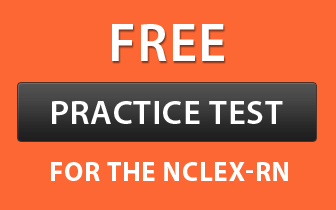Artificial Intelligence (AI) — also called machine intelligence — refers to the branch of computer science that is primarily concerned with building smart machines that are capable of performing tasks without human intervention or assistance. AI is ultimately intended to promote efficiency where human error can exist. The Artificial Intelligence markets forecast $116 billion in AI-related revenue growth by 2025.
For a relatively familiar example, Apple products are equipped with Siri, and Android devices are equipped with Google Assistant. Siri and Google Assistant are both voice-activated AI. Another example is Nest. Nest is a thermostat that analyzes human behavior patterns in order to make changes without human intervention. AI can also be found on manufacturing assembly lines, helping track energy costs, perform real-time inventory management, and analyze market trends.
AI Uses in Healthcare
Artificial Intelligence in healthcare is still in its beginning, foundational, and experimental phases, but by 2023 U.S. healthcare leaders expect to see widespread adoption of artificial intelligence in the field. AI is used in healthcare in three primary ways: patient-oriented AI, clinician-oriented AI, and administration-oriented AI.
Patient-Oriented AI
Not all patient procedures require human interaction or interpretation. Patient-oriented AI could inform tools that patients can use independently of clinicians or admins — examples include symptom checkers, smart wearables that monitor vital signs, and robots that are able to dispense medication and provide basic services to patients.
AI could also help patients decide if/when to go to the hospital, helping to lessen the burden felt by the healthcare shortage by eliminating unnecessary doctor visits. AI could also help ambulances take the fastest route by analyzing real-time traffic data.
Clinician-Oriented AI
Clinician-oriented AI would help providers operate more accurately and efficiently with smarter diagnostics, big data analytics, AI-powered X-ray or MRI analysis, and faster testing/development of medication. With greater supervisory systems and diagnostic tools, providers such as RNs could enjoy greater autonomy from MDs, and provide more comprehensive care. Repetitive tasks could be offloaded to automated systems so that providers can engage more with patients.
Administration-Oriented AI
Keeping track of electronic health records (EHRs) can be very time-consuming. Administrators may be able to replace more healthcare tasks and functions with robots and AI to cut down on staffing needs and costs. By employing AI systems to monitor population health and communicate with other care systems/communities, healthcare facilities could potentially detect outbreaks earlier, and allocate resources accordingly. Repetitive tasks — such as charting and paperwork — can be similarly streamlined via automation.
Benefits of AI in Healthcare
From computer-aided detection and diagnosis to image-data analysis, the ways that AI benefits healthcare are endless. The primary benefits include:
- Enhanced provider/clinical productivity;
- Improved patient care and engagement;
- Streamlined access to care both inside and outside of a medical facility;
- Reduced cost of pharmaceutical treatments;
- Individualized, data-driven treatment;
All of these benefits could help both healthcare providers and patients alike.
Challenges of AI in Healthcare
There are three primary challenges associated with the implementation of AI in healthcare — these include:
- Administrative Bloat: AI could potentially eliminate administrative work. While AI is promoting patient care and efficiency, it may also create a survivalist dynamic for the work it phases out as people start to be replaced by machine intelligence;
- Culture: Medicine has been practiced and improved on for years. While some are eager to shift towards AI in healthcare, others are less eager. Roles can be managed without human intelligence, and that can change healthcare dynamics as a whole;
- Security: In order to implement data analytics solutions, a lot of information is necessary, and that information is needed in one common area. This is a high-risk and ideal target for data thieves, hackers, and other informational threats;
- Trust: Many patients and healthcare providers alike are hesitant to entrust machines with health-related issues.
Overcoming the obstacles to AI in healthcare starts with education. As the potential uses and benefits become more clear, it is possible that the training of future nurses could evolve to incorporate more use of emerging technologies. Accredited nursing schools are already blending online learning with clinical practice, a trend that may be accelerated by more digitalization and machine-assisted functions in hospitals and care centers.
The Future of AI in Healthcare
As AI in healthcare continues to grow, the healthcare system changes and new focuses are prioritized. Ensuring that new healthcare workers have proper AI training, continual education, and that AI equipment is properly maintained will allow the industry to focus on hybrid skills, technological literacy, and keeping nurses and physicians up to speed with the latest AI-powered tools.
Earlier Diagnosis
When AI becomes more advanced and knows what to do with the house of data it manages, it can identify and diagnose patients at an earlier rate based on that information that can potentially slip past a healthcare provider initially.
Health Risk Predictions
The more population data that healthcare facilities have to analyze, the more accurate assessments healthcare providers can make about lifestyle and genetic risk prior to complications. This could help allocate resources and drive patient education, as well as potentially change how health insurance and wellness screenings are utilized by patients. If a digital profile is given at birth (and it is continually updated and compared with other data) how you decide to live, the amount of insurance you need, and many other facets of life could change.
Expanding Care
In some cases, patients need monitoring, but they do not have access to an immediate healthcare facility. Those patients can use wearables or personal devices that can be monitored by AI. The implementation of smartphones can also help through AI diagnostic and online consultations. This helps people who reside in states that don’t have immediate access — or those who don’t need face-to-face consultations — to healthcare. This shift may directly push for more registered nurse certifications so that registered traveling nurses can take over as the primary caregiver.
Image Source: https://unsplash.com/





